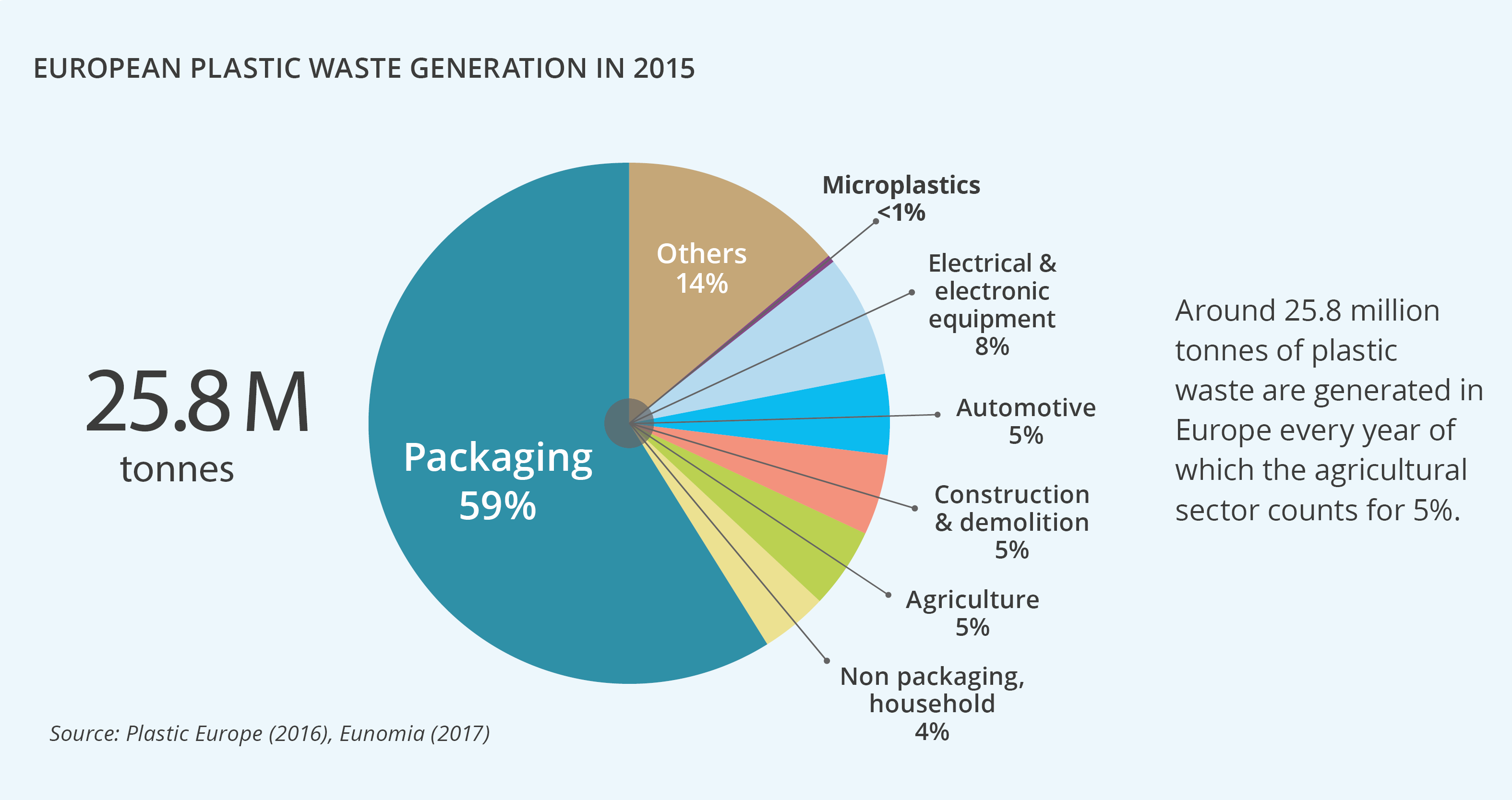Micro plastics
The EU Commission has launched the Circular Economy Action Plan in 2015 which is its cornerstone policy towards a more resource-efficient economy in Europe. Among the main priorities of the plan is the reduction of plastic use and waste. Use of plastics has increased twentyfold since the 1960s reaching 49 million tonnes in 2015, thus the improvement of the re-use and recycle of plastics at both business and consumer level remain the major target for the upcoming years.
Early in 2018, the European Commission adopted a European Strategy for Plastics in a Circular Economy in which plastics have been identified as key priority. Reduction in microplastics is part of this scheme. Within its framework, the European Commission has therefore put forward a proposal to restrict (according to Annex XIIII of REACH) by 2021 some microplastics[i] that are intentionally added to products, including polymers used in fertilizers.
[i] Microplastics, pieces of plastic less than 5 mm long, accumulate in the sea and due to their small size, the marine life can easily ingest them. Microplastics have been also found in the air, drinking water and foods like salt or honey, with potential impacts on human health
Polymers in fertilizers are used for two main purposes:
Technical additives
Technical additives (such as anti-caking) are used in fertilizers to prevent the formation of lumps in moist conditions which makes it difficult to pack, transport and keep them.
Controlled Release Fertilizers (CRF)
Controlled Release Fertilizers (CRF) are coated with a tiny layer of polymer which allow to release nutrients in a very timely and targeted way to various crops (trees, flowers, some cash crops) and used in closed environments such as potting plants or greenhouses. This means that nutrients (such as Nitrogen, Phosphorus and Potassium) are released to the plants in a more targeted way and that there are less losses to air or water.
The EU Fertilizing Products Regulation already sets the rules for controlled-released fertilizers. As such, polymer encapsulation systems for fertilizers and anti-caking/anti-dust additives in fertilizers for agricultural use currently fall within the scope of future restriction but will be outside it if suitable biodegradability criteria were to be developed by the industry by 2026.
The timeline applies to technical additives in fertilizers since controlled-release fertilizers are exempted from the restriction, being covered by the EU Fertilizing Products Regulation. A transition period of 5 years will apply after the entry into force of the micro plastics regulation. From 2026 onwards, only polymers meeting the biodegradability requirements laid down in the new Fertilizing Products Regulation will be allowed on the market.
Fertilizers Europe cooperation with the European Chemical Agency (ECHA)
Fertilizers Europe, is an accredited stakeholder of ECHA and actively cooperates with the latter to ensure continuing compliance with REACH regulation. By providing sound evidence and expertise advice, Fertilizers Europe constantly works with regulators to find solutions and alternatives to be used in controlled release fertilizers and in technical additives (anti-caking, anti-dust agents).

